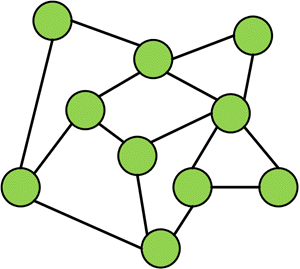
|

The next evolution in real-time AI systems is the paradigm of intelligent agents, communicating by messages.
This was pioneered by the Activation Framework project, which was developed by a team led by the Dr. Peter Green in the 1990s with funding by the USAF.
In Activation Framework, the intelligent agents were coded using a special Expert Systems language, called Decision Support Language. Unfortunately, as soon as the number of rules in an intelligent agent grew to be more than about half-a-dozen, it became very difficult to debug the intelligent agent code.
Also, we found that much of the code needed within each intelligent agent did not fit well within the IF THEN ELSE coding paradigm but looked much more like the code used in decision trees.
Other than that, the paradigm worked well for building large complex decision-making system, as we could, with some difficulty, debug the rules for each intelligent agent separately. Or we could write them directly in the C language, which made debugging much easier.
Then we could "knit" these agents together in a flow-graph linked by messages, with agents being triggered by the arrival of messages, in a manner analogous to the triggering of rules in an Expert System but at a higher level of granularity.
This paradigm of intelligent agents cooperating by sending messages, was then used for the development of the MilramX real-time AI software platform. This platform has been extensively used to implement systems which exchange information between industrial systems.
In its early development this was especially between the BellHawk real-time work-in-process and materials tracking system and a variety of accounting and ERP systems.
MilramX is now used in industrial alerting systems, such as warning material handlers when they need to replenish inventory in Kanban bins on the factory floor. In addition, it is increasingly being used to exchange information for supply chain traceability in food and pharmaceutical applications.
The biggest strength and weakness of the collaborating agent paradigm is that, in practice, we develop, test, and debug each intelligent agent as an individual entity, which is good for Agile development, and then we put them all together in a system, which is then tested operationally as whole, when unexpected interactions may arise.
This is the same methodology used to build and test complex systems such as aircraft and suffers from the same flaws in that unexpected interactions between the "black box" agents can cause unexpected failures. Fortunately, in information delivery systems, this is usually not as fatal as a systems interaction flaw in an aircraft.
Another weakness is that the agent code has to be coded by programmers. This code can be simplified through the use of high level calls such as Fetch, Store, Send, and Receive that make it possible for business analysts to understand the code. But, unfortunately, it has also proven possible for programmers to sometimes write agent code that is completely incomprehensible (as with any other system development methodology).
Please click here to learn more about "MilramX Intelligent Agents".